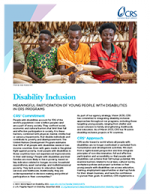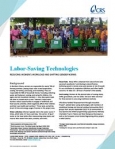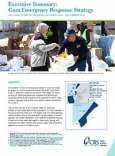Fact Sheet | April 13, 2023
Youth Disability Inclusion
People with disabilities account for 15% of the world’s population—over a billion people—and are a part of every society. They confront social, economic and cultural barriers that limit their full and effective participation in society. It is these barriers, combined with physical, mental, intellectual or sensory impairments, that disable individuals and contribute to poverty and disempowerment.
CRS works toward a world where all people with disabilities are no longer overlooked or excluded from humanitarian and development activities. We start from a rights-based perspective and then integrate principles of non-discrimination, full and effective participation and accessibility so that people with disabilities can achieve their full human potential. We examine barriers related to local laws, cultural norms, workplace policies and project activities so that young people with disabilities can access education, training, employment opportunities or start-up funds for their dream business, and have the confidence to pursue their goals. In addition, CRS implements a twin-track approach to disability inclusion. This means we make investments to address inequality in our programs and factor needs of marginalized groups while also developing targeted programs for specific needs of people with disabilities and leveling the playing field for their participation. Lastly, we are intentional about collecting and using disability disaggregated data to identify participation barriers, inform project design and implementation, and evaluate the extent to which our programs have reached people with disabilities.





